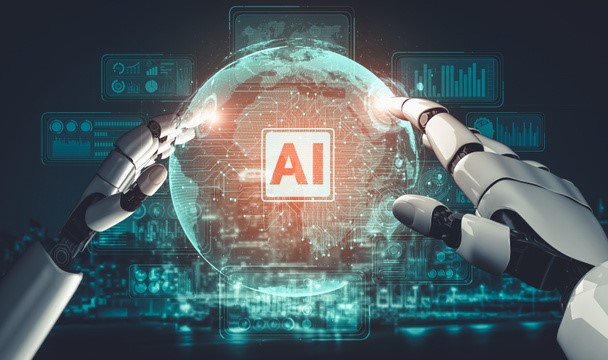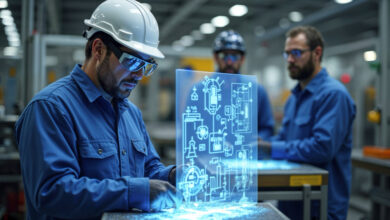How Generative AI Tools Can Elevate Human Abilities

Generative AI is rapidly transforming various industries by augmenting human capabilities in ways that were once considered science fiction. From art and design to healthcare and engineering, generative AI tools are reshaping how professionals approach problems and create innovative solutions.
These tools, powered by machine learning models that can generate new content—be it text, images, music, or even designs—are not just automating repetitive tasks but actively enhancing human creativity and problem-solving abilities.
In this article, we’ll explore how generative AI tools can elevate human abilities across different domains, the challenges they help overcome, and the broader implications of human-AI collaboration.
The Power of Generative AI: Beyond Automation
Traditionally, AI systems were focused on automating tasks that required high precision but repetitive input, such as data entry, financial calculations, and pattern recognition. Generative AI, however, goes a step further by producing original content that didn’t exist before. Using vast datasets and deep learning algorithms, these models can create new text, generate designs, and even write software code.
However, the key benefit of generative AI is not its ability to work independently but how it complements human abilities. AI Haven excels at analyzing large datasets, finding patterns, and generating options that humans may not have considered. When paired with human judgment, intuition, and emotional intelligence, the combination becomes a powerful tool for creativity and innovation.
Enhancing Creativity and Design
Some of the generative AI tools’ most popular use cases are in the creative industries as described below. Some people in art, design, and writing have embraced AI tools to come up with what is technically feasible to create. In the concept development process, let us consider graphic design where an AI system can produce a high number of differentiated designs in response to a user direction – something that would take a design multiple hours to conceive.
There is also AI art in which we can generate paintings, music, and sculptures, according to the parameters given by artists. Applications such as DALL-E and MidJourney can generate very realistic images from text commands, helping artists tweak ideas that can take them months to imagine using the normal processes.
However, the real value is derived from the combined human. AI creates novel and innovative concepts, but it is to a human who gives choice, finishes and assigns implications to the final product. This works in concurrence and results in further enhancement of idea ideas beyond the ordinary and imaginable horizons.

Empowering Decision-Making in Healthcare
Generative AI is also radicalizing sectors such as healthcare as it can seriously boost decision-making processes. AI is now being applied in clinical decision-making to interpret large datasets including medical images, genetics, and patient history which are otherwise difficult to extract by human beings.
For example, by using an AI model to treat a particular disease, the doctor will be able to approximate the result of the treatment depending on a patient’s genetic makeup and medical history. These models help doctors make correct diagnoses for diseases and select the best treatment options. Read this for reference.
Once more, it is important to stress that the human factor plays a crucial role here. Although AI can search through huge amounts of information and suggest possibilities, it is the decision of medical workers to understand these outcomes and make choices that correspond to the patient’s preferences.
Boosting Innovation in Engineering and Manufacturing
In engineering and manufacturing, generative AI tools have become indispensable for improving design processes and optimizing efficiency. Engineers around the world can use AI-driven platforms to generate optimized designs for products, machines, or infrastructure projects. These tools can propose designs that meet specific functional requirements while minimizing material use or maximizing durability—often discovering solutions that human engineers might not have considered.
In manufacturing, AI tools can generate optimized production schedules, predict equipment failures, and streamline supply chain logistics. For example, generative design in automotive and aerospace industries helps create parts that are lighter, stronger, and more cost-efficient by simulating various design iterations and evaluating their performance.
The role of humans in this context is essential, as engineers and designers bring critical thinking, ethical considerations, and real-world experience to evaluate and implement AI-generated designs. Human expertise ensures that AI suggestions align with safety standards, feasibility, and practical application.
Challenges and Ethical Considerations
Despite the vast potential of generative AI tools, their use also raises challenges and ethical concerns. For one, there is the question of job displacement. As AI systems become more capable of performing tasks traditionally done by humans, there is a risk that certain professions may become obsolete. However, the reality is likely to be more nuanced. While AI may take over repetitive or routine tasks, it will also create new opportunities for humans to work in tandem with AI, focusing on more complex and creative roles.
Another concern is the ethical implications of AI-generated content. For instance, who owns the intellectual property of AI-generated art, music, or text? Moreover, in fields like healthcare and law, where human lives and rights are at stake, the potential for AI to make incorrect or biased decisions is a major ethical concern. AI systems must be transparent, auditable, and designed with fairness and accountability in mind.
The Future of Human-AI Collaboration
As generative AI tools continue to evolve, the potential for elevating human abilities becomes even more profound. Rather than viewing AI as a replacement for human workers, it is more productive to see it as an extension of human capability. AI can analyze vast amounts of information, generate innovative ideas, and handle routine tasks, while humans bring creativity, empathy, and critical thinking to the table. Read this article for more information.
The future of human-AI collaboration lies in harnessing the strengths of both entities to push the boundaries of what we can achieve. In industries from healthcare and engineering to art and literature, the partnership between humans and AI will redefine what is possible and open new frontiers for creativity, innovation, and problem-solving.
Conclusion
Generative AI tools have the power to elevate human abilities by complementing our creativity, decision-making, and problem-solving skills. From enhancing artistic expression to transforming industries like healthcare and engineering, these tools enable humans to achieve more in less time, while also opening up new possibilities.
As we continue to refine and develop these technologies, human-AI collaboration will shape a future where both entities work together to solve complex problems and unlock unprecedented potential.
Read also: Securing Your Enterprise from Cyber Scams: A Comprehensive Strategy






